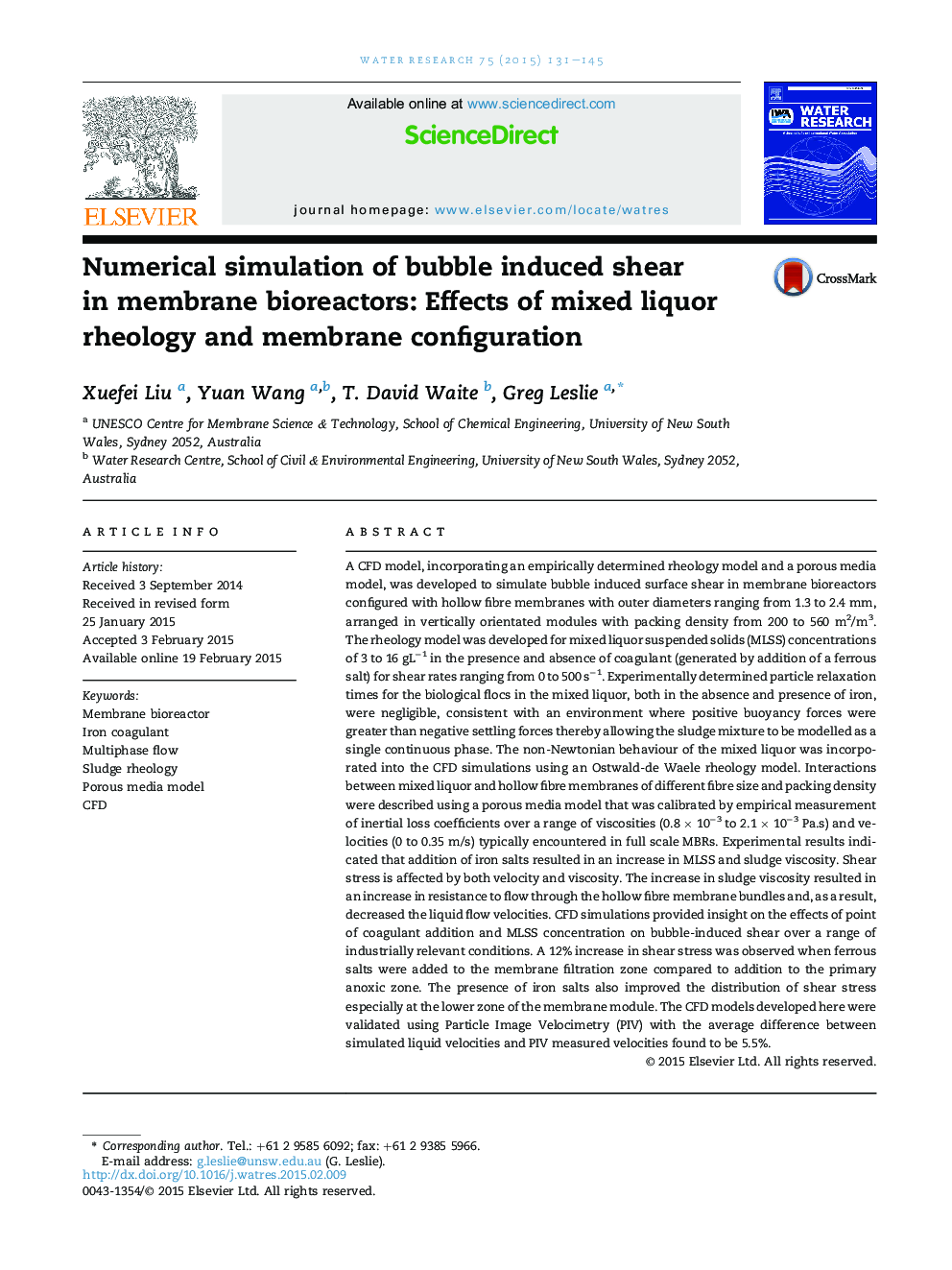| Article ID | Journal | Published Year | Pages | File Type |
|---|---|---|---|---|
| 4481207 | Water Research | 2015 | 15 Pages |
•CFD model developed and validated for hollow fibre MBR with coagulant addition.•Particle relaxation time confirms mixed liquor can be modelled as single phase.•Rheological models established for sludge in the absence and presence of iron.•Empirical correlations built for fibres with various diameter and packing densities.•Fe(II) addition directly to the membrane zone results in higher shear stress.
A CFD model, incorporating an empirically determined rheology model and a porous media model, was developed to simulate bubble induced surface shear in membrane bioreactors configured with hollow fibre membranes with outer diameters ranging from 1.3 to 2.4 mm, arranged in vertically orientated modules with packing density from 200 to 560 m2/m3. The rheology model was developed for mixed liquor suspended solids (MLSS) concentrations of 3 to 16 gL−1 in the presence and absence of coagulant (generated by addition of a ferrous salt) for shear rates ranging from 0 to 500 s−1. Experimentally determined particle relaxation times for the biological flocs in the mixed liquor, both in the absence and presence of iron, were negligible, consistent with an environment where positive buoyancy forces were greater than negative settling forces thereby allowing the sludge mixture to be modelled as a single continuous phase. The non-Newtonian behaviour of the mixed liquor was incorporated into the CFD simulations using an Ostwald-de Waele rheology model. Interactions between mixed liquor and hollow fibre membranes of different fibre size and packing density were described using a porous media model that was calibrated by empirical measurement of inertial loss coefficients over a range of viscosities (0.8 × 10−3 to 2.1 × 10−3 Pa.s) and velocities (0 to 0.35 m/s) typically encountered in full scale MBRs. Experimental results indicated that addition of iron salts resulted in an increase in MLSS and sludge viscosity. Shear stress is affected by both velocity and viscosity. The increase in sludge viscosity resulted in an increase in resistance to flow through the hollow fibre membrane bundles and, as a result, decreased the liquid flow velocities. CFD simulations provided insight on the effects of point of coagulant addition and MLSS concentration on bubble-induced shear over a range of industrially relevant conditions. A 12% increase in shear stress was observed when ferrous salts were added to the membrane filtration zone compared to addition to the primary anoxic zone. The presence of iron salts also improved the distribution of shear stress especially at the lower zone of the membrane module. The CFD models developed here were validated using Particle Image Velocimetry (PIV) with the average difference between simulated liquid velocities and PIV measured velocities found to be 5.5%.
Graphical abstractFigure optionsDownload full-size imageDownload high-quality image (249 K)Download as PowerPoint slide
